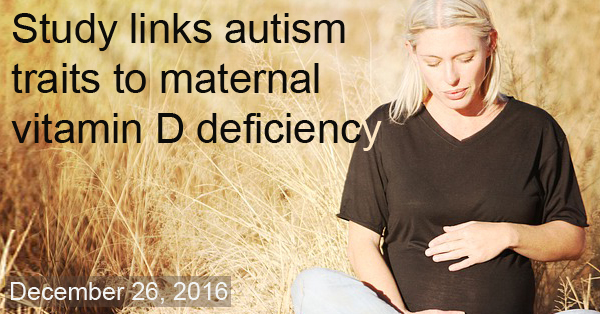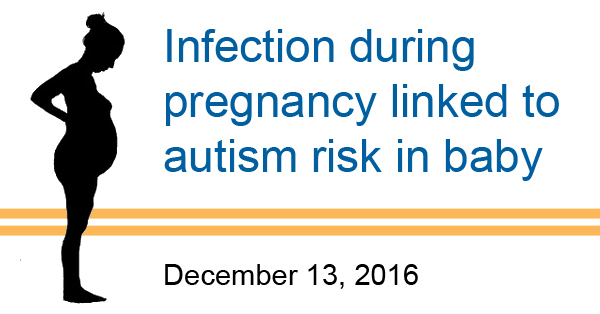Archives
December, 2016
Select a different month in the archive
Maternal Vitamin D Deficiency Linked to ASD-Traits in Kids
By Chelsea E. Toledo, M.A. on December 26, 2016

Background: Vitamin D is an important nutrient that not only aids the development and maintenance of the bones but also brain function. While most people in the developed world get sufficient vitamin D from regular sun exposure, deficiencies can arise in areas with long, cold winters or when people avoid the sun altogether. Studies have demonstrated that vitamin D deficiencies during pregnancy are associated with an increased risk of cognitive impairment and motor development in the resulting offspring.
What’s New: On November 29, 2016, Molecular Psychiatry published a study examining the relationship between vitamin D deficiencies in expecting mothers and the presence of behavior traits associated with Autism Spectrum Disorder, or ASD, among their children. The researchers assessed vitamin D levels in preserved blood samples taken from 4,229 mothers mid-way through their pregnancies, as well as from cord blood samples taken at birth. They then screened the resulting children (who, at the time of the study, averaged six years of age) for ASD traits using the Social Responsiveness Scale, or SRS. They found that children whose mothers were deficient in vitamin D both mid-way through pregnancy and at birth had higher average SRS scores – indicating the presence of ASD traits – than those whose mothers either had no deficiency or were only deficient at one point in time.
Why it’s important: This is the first study to identify a possible link between the level of vitamin D in a mother’s blood mid-way through her pregnancy and autism-related behaviors in the resulting child. Future studies could evaluate whether routine, inexpensive vitamin D supplementation during pregnancy could reduce the incidence of ASD in children.
Help me understand :
| Source(s) : |
| Tweet |
Infection During Pregnancy Increases Baby’s Autism Risk
By Chelsea E. Toledo, M.A. on December 13, 2016

Background: While no singular cause has been identified for Autism Spectrum Disorder (ASD), research points to several risk factors. These include patterns in genetics as well as in external environmental conditions. One question under debate by researchers is whether infections during pregnancy could increase the risk of ASD in the resulting offspring. Multiple studies have investigated this theory, with conflicting results. To better understand a larger trend in smaller studies, researchers will sometimes conduct a meta-analysis – combining the results of the studies to create a bigger picture of the study effect in action. This statistical approach is especially useful when individual reports disagree in their conclusions.
What’s New: On June 6, 2016, Brain, Behavior, and Immunity published a meta-analysis of 15 studies examining the link between maternal infections and ASD risk. In total, the researchers evaluated data from more than 40,000 ASD cases studied between 2004 and 2015. Within the larger group, individual studies focused on viral, bacterial and fungal infections impacting women during all three trimesters of pregnancy. In combining all these data, the researchers observed a 12 percent increase in the risk of an ASD diagnosis in the offspring of mothers who experienced an infection during pregnancy. The effect was most pronounced among expectant mothers who were in their second trimester of pregnancy, whose infections led to hospitalization, and among those with bacterial infections of the skin or urinary tract. Viral infections during pregnancy and infections during the first trimester, however, were not associated with increased ASD risk.
Why it’s important: Following conflicting evidence in previous studies, this study suggests that babies born to mothers who experienced certain types of infections during pregnancy may in fact have a higher risk of being diagnosed with ASD. Of note, risk severity depended on the time of infection exposure (first, second or third semester) and the site of infection. With large enough sample sizes, future studies could more definitively prove or disprove that link – focusing especially on bacterial infections leading to hospitalization.
Help me understand :
| Source(s) : |
| Tweet |

